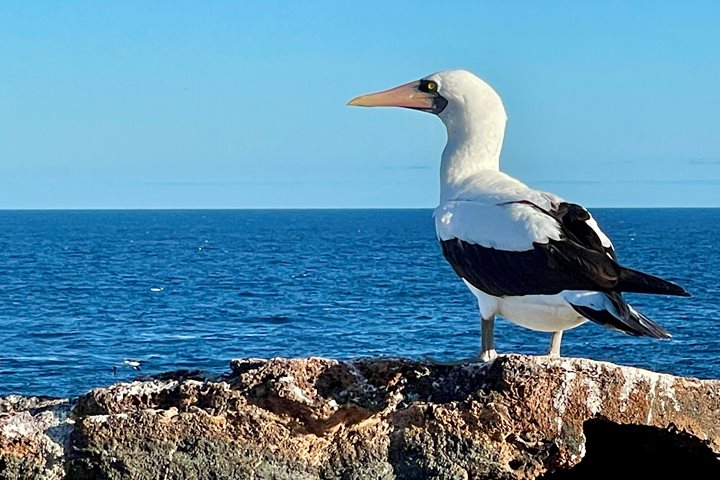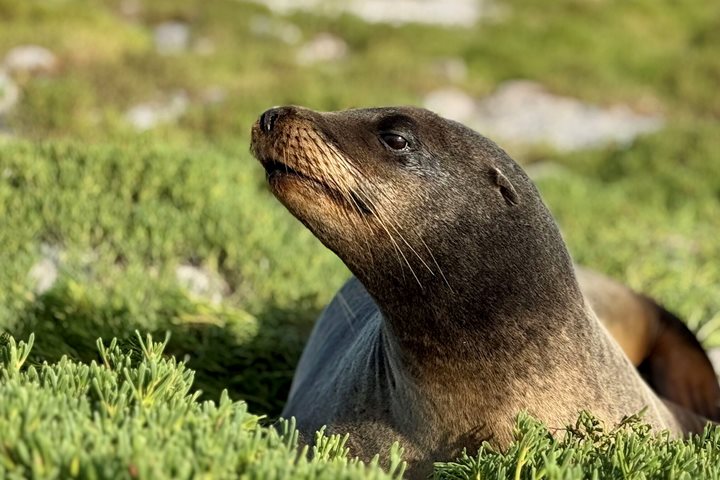The grand finale of an astonishing week ended with our visit to Genovesa. This is one of the most incredible places in Galapagos and is known as the island of the birds because the great number and variety of land and sea birds seen here. Genovesa has unique creatures like the short-eared owl we saw along our walk, the large cactus finch, and the large ground finch, both unique birds found nowhere else.
The snorkeling was superb, with some inquisitive sea lions that were playing with our enthusiastic guests. Kayakers enjoyed the ride along the magical cliff that forms the ring of the caldera at Darwin Bay. We have had an amazing week exploring this enchanted archipelago.







